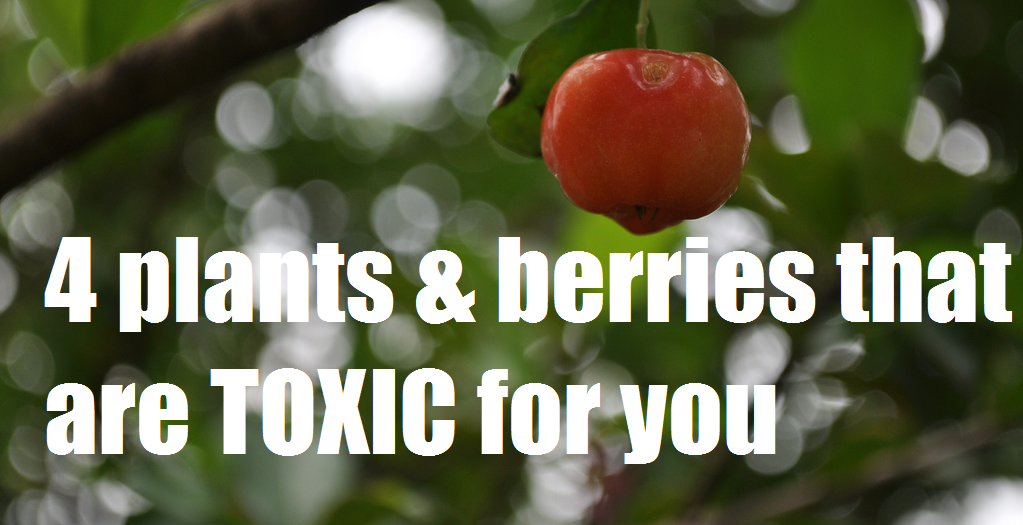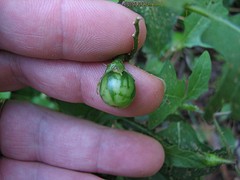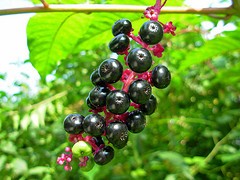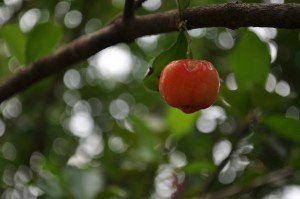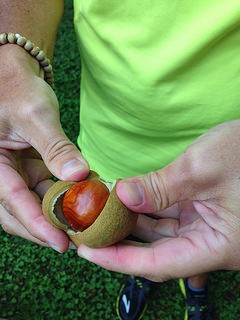Obviously a person doesn't want to be in a situation where they're stuck deciding whether or not a plant is safe to eat for their own survival. But any Die Hard Survivalist will want to be prepared for that exact scenario. Preparation is survival.
#4 Horse nettle
Original Image Source: Chris Fannin
Horse nettle (Solanum carolinense) plants are dead and dry during the winter, but their fruits can remain plump and juicy. The greenish or yellow-colored, cherry-tomato-shaped fruits of horse nettle could look like a meal to the uneducated forager.
Their tomato-like appearance should be a warning, though. The tomato’s family (nightshade) is full of wild relatives that are harmful to humans. The horse nettle fruits and most other parts of the plant are poisonous to varying degrees from the toxic alkaloid solanine.
Eating fruits can cause abdominal pain, and possibly lead to circulatory and respiratory depression. Just remember that there are no edible “wild tomatoes” in the lower 48.
#3 Pokeberries
Original Image Source: Bob Richmond
The pokeweed plant (Phytolacca americana) has some of the juiciest and most appetizing looking berries of late summer and early fall. But don’t be fooled by this alluring look. These berries are animal food, not people food. Migrating birds, deer, and many other animals can chow down on these poisonous berries with no ill effect. Humans aren’t so lucky.
A handful could kill a child, and a little more could take out an adult. Pokeweed can be spotted easily by the grape-like clusters of purple-black berries and brightly colored, purplish-pink stalks up to 8 feet tall. Seriously, they look delicious, but don’t eat them.
#2 Wild cherry
Original Image Source: Whologwhy
Wild cherry trees (Prunus spp.) can produce a tasty cherry fruit, but these same trees can also be a source of toxicity. The wilting leaves of cherry develop a high concentration of cyanide. While humans aren’t normally drawn to the odor, livestock frequently eat this dying foliage and end up dying themselves. The cherries themselves also contain cyanide in their pits, so don’t try to grind those up for flour or any other human foods.
#1 Buckeye
Original Image Source: Shannon
Several species of buckeye tree (Aesculus spp.) grow throughout the central and eastern United States. These native trees have nuts that are surprisingly poisonous. Buckeye nuts have a shiny brown shell, which is surrounded by a dull textured husk – similar to the outer husk structure of hickories (Carya spp.).
Break the tree nut open, and you’ll find a solid, whole nut meat inside a buckeye. This is in contrast to the complex shape of the hickory nut meat, which resembles the shape of walnut or pecan internally. Also, be careful that you don’t confuse buckeyes with chestnuts, as chestnuts have a shiny nutshell under an outer husk. Look for the needle covered husks on chestnut, and you’ll be working with nut.
It's so important to know the difference between safe and toxic plants because all of these look like exotic fruits you'd consume. Pokeberries look like exotic blueberries! And the Buckcherry looks like some sort of guava. Make sure you share these with your friends and family. Everyone should be aware of these toxic plants. And on that note, we would like to thank Outdoor Life for providing them. For even more toxic plants to avoid, check them out here.
